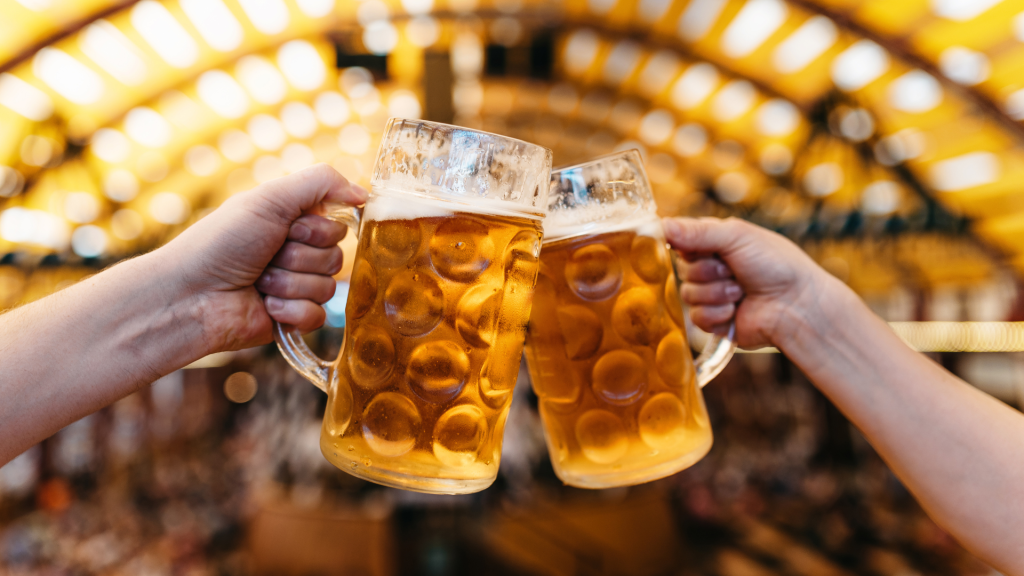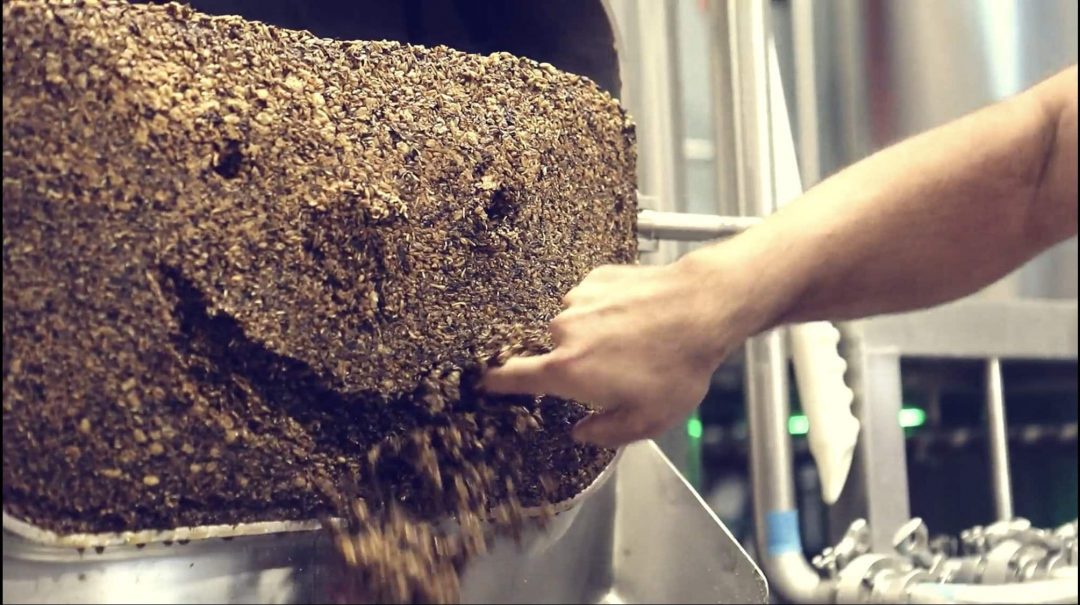
Photo Credit: Janel Santana
We often talk a lot about finished products: delicious craft beer, wine, cider, sake, spirits, and more. We also talk a fair amount about process. How that Manchurian Crab Apple makes great cider, or how distilled spirits are made. What we don’t always focus on, when we are staring into our beautiful glass of bubbly beer, is what happens to the stuff that didn’t make it into the keg.
From Grain to Glass and Back Again
“That first step of brewing is essentially like making a massive batch of oatmeal,” says Larissa Clifford, the owner and operator of Bird’s Beer Distribution. “You have hundreds of pounds of grains that get steeped with hundreds of gallons of water. After the hot liquid is moved into the boil kettle, there are approximately 700 pounds of wet grain left behind per 10 bbl batch.”
Knowledge is power, Tippler Nation! bbl = 1 beer barrel = 31 gallons = 248 pints
So what’s a brewer to do with a soggy batch of wet oatmeal, you ask? Well, that depends on where exactly said brewery is based. City folk have a tougher time with all that spent grain!
“At Big aLICe’s New York City brewery we work with a carting company that comes and collects the spent grain for us. Once picked up it is brought to a facility. Then it is separated along with other food waste grains from other companies. Finally, it is brought to farms in New Jersey where it is used for feed,” explains brewer Jon Kielty. “At the Finger Lakes location, we have a direct relationship with the farmer up there. After our brew days we reach out to our local farmer who comes to the brewery with a large flatbed truck. He collects the spent grain containers and takes them back to his farm to feed to his cows.”
So, why is dealing with spent grain tougher in cities?
“Being in NYC without a direct line of communication to local farms, most breweries here have to rely on paying companies to collect the spent grain for us. With the price of gas and tolls, this becomes a big expense for breweries,” Jon points out.
Big aLICe Brewing
“Unfortunately,” adds Larissa, “it is very time-sensitive. If spent grain is going to be used for other applications and there isn’t any real infrastructure to get it from point A to B—if they aren’t processed within 24-48 hours—the grain starts to rot. We did our best at Destination Unknown to coordinate with a local hog farmer for larger grain pick ups. We would fill plastic totes for them to pick up as often as they were able. For one of our annual pig roasts, we were able to cook a pig that had been raised on our spent grain and marinated with one of our beers. That was an awesome full-circle moment.”
Beer-grain-fed-beer-marinated local pork? Shut the fermenter door!
Beyond The Farm
It makes total sense to return spent grain or fruit to the earth in the form of feed or compost. But what happens when you think outside the farm?
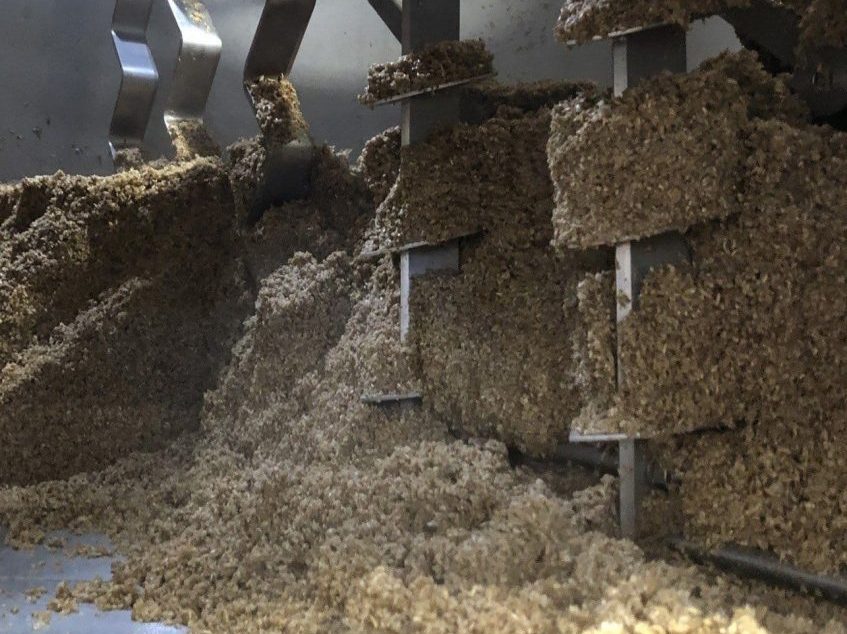
Photo: Destination Unknown Beer Co.
DUBCO also gives their grain to “a small baking company called Posh Pups. They use it to make dog treats, then sold in the breweries” throughout their area! And Big aLice has a local man who picks it up for chicken feed.
You can also repurpose spent grain into flour, but for that you need a flour mill. Is it beer or is it bread? What came first? Oh the historical irony there! You can also use the whole grain to create power bars, like they did for the Brewer’s Association Menus of Change conference. The BA had the pizza dough they made from the spent grain tested, and it contained “higher levels of protein, ash, iron and zinc. It also had a higher level of insoluble fiber.” Cheers to that!
Thinking Outside The Bread Box…
Perhaps the coolest thing I’ve come across (thanks to Larissa!) is the Peace Paper Project. It’s”an international community-arts initiative that utilizes traditional papermaking as a form of trauma therapy, social engagement, and community activism.” The initiative has partnered with breweries in Germany, Poland, and the U.S. to make paper out of spent grains! “When it comes to papermaking, one five-gallon bucket of grain makes up to fifty sheets of paper.” Beer labels and even packing material can then be born from this very paper!
While we are on the subject of creative applications, I recently attended a fascinating seminar. A seminar on molecular harmony and aroma led by Francois Chartier. An award winning sommelier, author, and all around fascinating human, Francois works with the University of Barcelona to study Cava. A student then uses the lees, full of amino acids and flavor, to create sourdough. Francois also studies and blends sake. As for the remaining rice? He says, “nothing is wasted in Japan!”
Steps Toward A Sustainable Future
With all of the repurposing of grain, are there additional sustainable efforts breweries are undertaking?
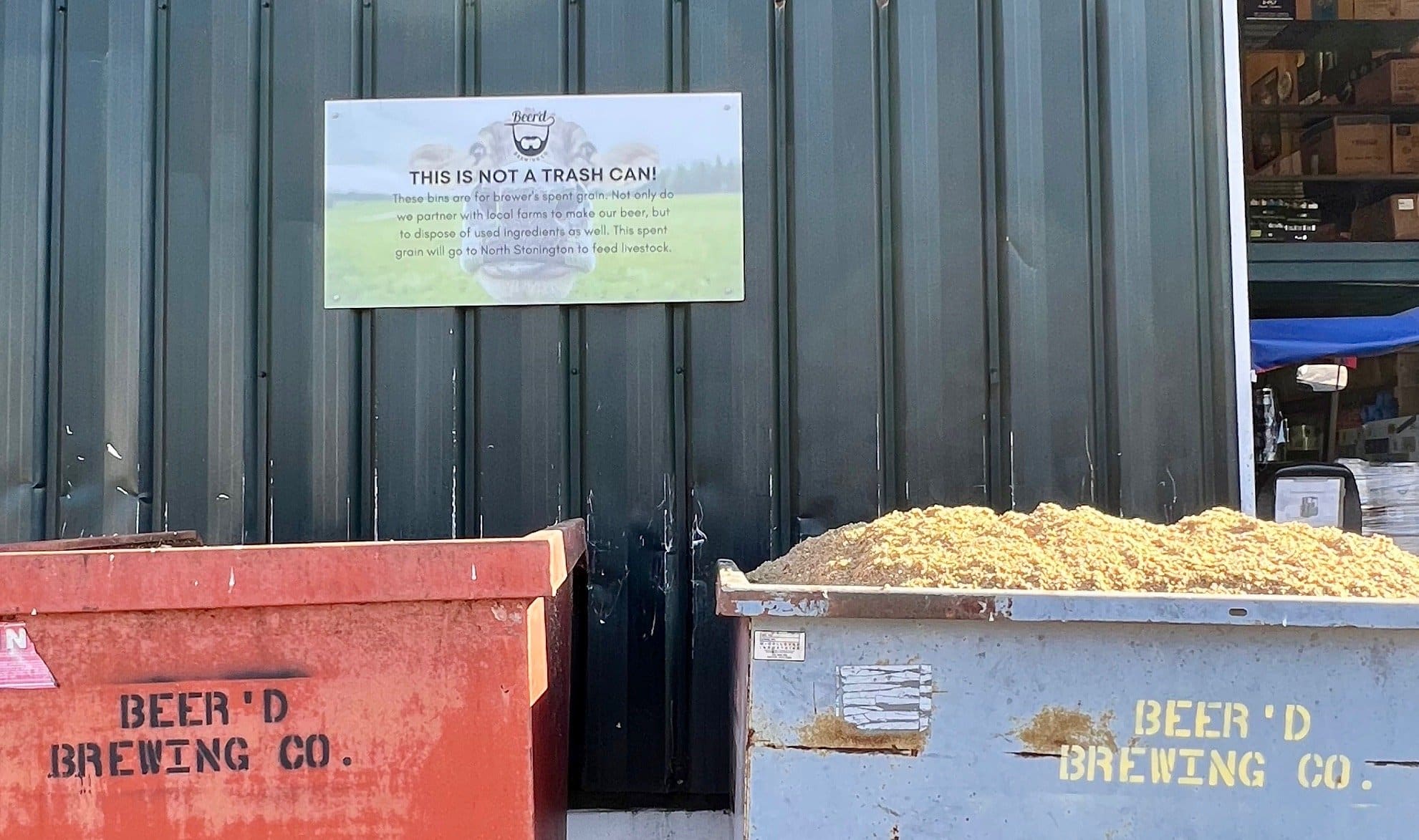
Larissa tells me “Destination Unknown recently purchased a 48-acre farm in the Hudson Valley where they opened a second tasting room. They are developing plans to become more sustainable, starting with growing their own grain and hops. Like brewers in many other regions, they coordinate orders with other breweries for bulk shipping of grains, glassware, etc.”
“We’ve tried to be as sustainable and environmentally conscious as we can at Big aLice,” Jon adds, “Another big source of waste for brewers is water. We recollect as much water as we can during the brew process to use on the following batch to prevent more water than needed from going down the drain. The brewery is also an EPA Green Partner, getting most of its energy from wind power.”
Partnerships Can Only Help The Cause…
Larissa continues, “We are lucky in New York to have an active and informed State Brewers Association. They do so much when it comes to marketing NY beer and building legislation to make improvements for our industry every year but I would love to see them work on more large-scale partnerships to promote sustainability as well. It’s definitely the responsibility of individual breweries to consider their own impact but having those partnerships and a template for how to utilize them would be helpful when so many of these small businesses are too caught up in their day to day to develop procedures at that level. I fully believe if someone would reliably collect grain after brew days that breweries would be on board and support those efforts whole-heartedly.”
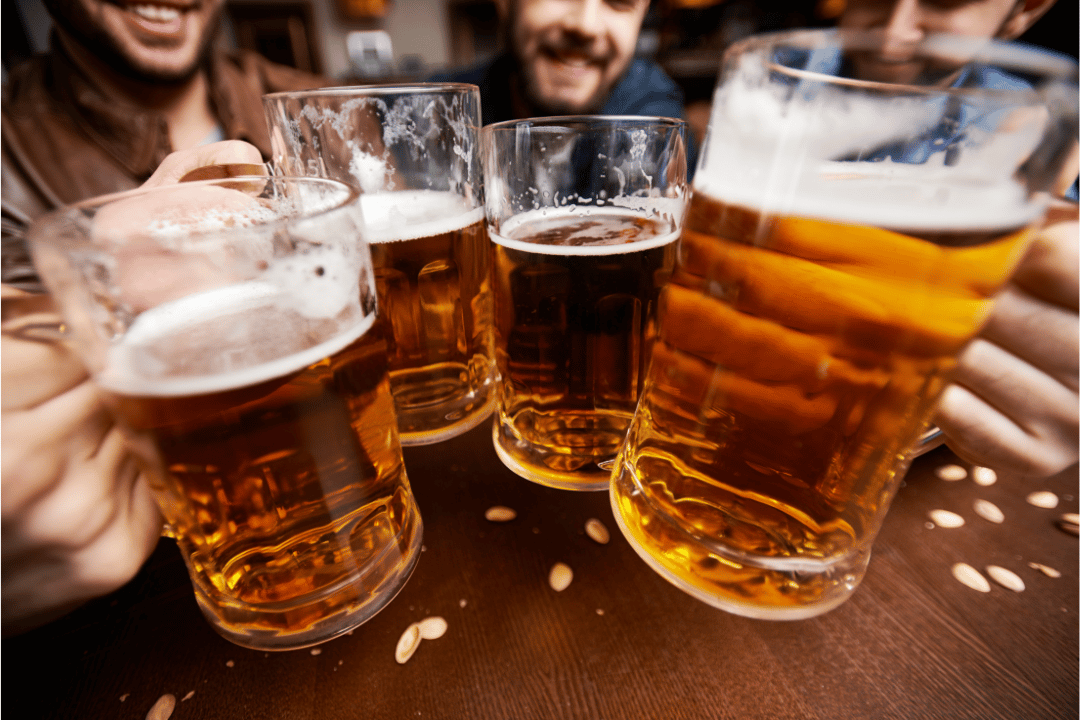
A fact we come back to, time and time again: beer is indeed a community builder. Whether linking the city breweries to the farms or the creative local initiatives to their local brewers, beer brings people together. I’ll drink to that.

Jena is an event host & contributing writer for The Crafty Cask, as well as an award-winning bartender, cocktail educator, Cicerone Certified Beer Server, and Executive American Whiskey Steward. Based in NYC, Jena has been working in the craft alcohol world for the last 15 years with recipes appearing in Manhattan restaurant/bars & multiple publications. She is the 2019 Nikka Perfect Serve Global Runner Up and a 2020 Cognac Connection winner.


